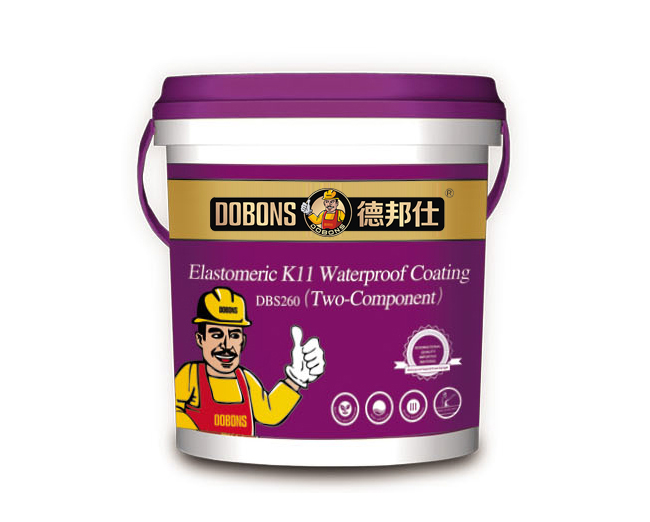Waterproofing/dampproofing coatings Introduction
Date of issue:2019-11-21 Author: Click:
A coating on the exterior of a foundation wall prevents water and water vapor from moving through the wall.
The first line of defense is the concrete itself. Walls should be reinforced to keep cracks tight and the concrete should be well consolidated. A low water-cement ratio mix will have less shrinkage that can lead to leaky cracks.

Most waterproofing is an exterior coating, on the positive side (exterior) of the wall, although another option is to use an admixture that makes the concrete itself impervious to water and water vapor (see Integral Waterproofing).
All waterproofing and dampproofing starts with a clean, smooth wall surface. Loose particles should be washed or brushed off, protrusions removed, and any existing cracks repaired. Seam tape can be used to bridge cracks. New concrete should be allowed to cure and dry out for 7 to 14 days, although some spray-on membranes can be applied to green concrete.
Dampproofing is a relatively simple treatment of asphaltic material that is sprayed on or applied with brush or roller. Small jobs are easily handled by builders although many will hire a specialty waterproofing contractor for larger projects.
True waterproofing requires more time and effort. The outside of the wall is covered with an impermeable coating that extends down to the drain. One method employs sheets fastened to the wall and lapped adequately at seams, both vertical and horizontal. Another method uses several layers of sprayed-on seamless material built up to the thickness specified by the manufacturer.
Some of the spray-on treatments require a priming coat and then one or more final layers of a liquid-rubber, elastomeric coating built up to usually a minimum 60-mil thickness. These coatings dry in about 60 minutes to form a seamless barrier which is resistant to puncture.
Another way to waterproof is to apply sheet products, typically rubberized asphaltic membranes attached to polyethylene film. These sheets are fastened directly to the wall, either using a peel-and-stick approach or with separate mastic, sometimes augmented with fasteners. Adequate lapping at seams, 2 to 3 inches, is important and be careful to prevent gaps or "fish mouths" at the edges. The sheets can be cut with a razor and pressed down to seal. For bubbled areas, slit the membrane, press it down, and apply a patch of membrane right over the top.
The International Residential Code specifies that the membrane must extend from the top of the footing to the finished grade, but a better approach is to take the membrane over the footing and down into the drain trench.
For very wet foundations, a waterproofing contractor might use bentonite waterproofing panels. These panels are made of bentonite clay sandwiched between cardboard. This clay is highly expansive and when water makes contact it forms an impenetrable barrier against infiltration.










